The June Catholic All Year Liturgical Living Show is here! The feast of the Nativity of St. John the Baptist isn’t until June 24th (the eve is June 23rd), but I wanted to give you plenty of time on this one, because I’m really hoping some of you are going to want to dive into the deep (slash crazy) end of liturgical living with this awesome ancient tradition.
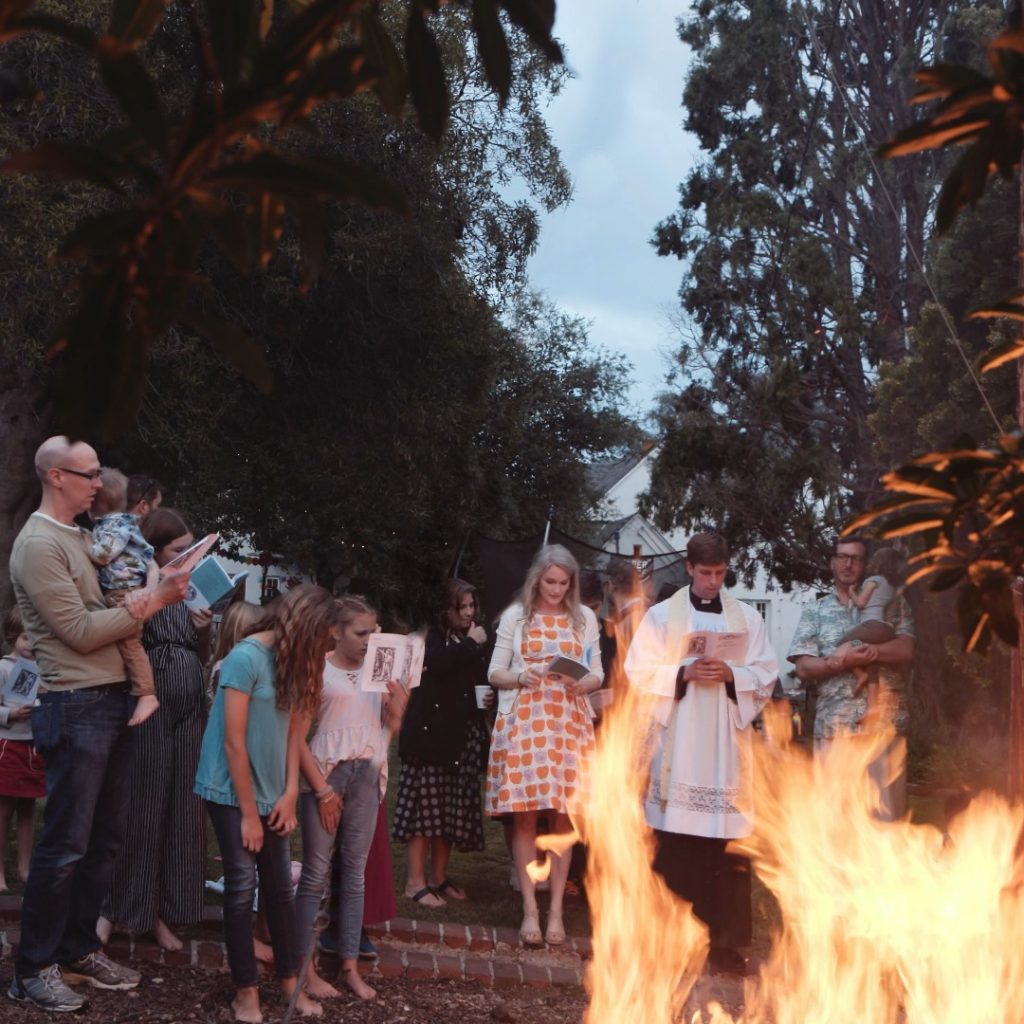
The first I ever heard of a liturgical bonfire was through Kelly at This Ain’t the Lyceum. Their annual St. John’s Eve bonfire sounds like a pretty epic party. I knew we had to do it, but wasn’t until THIS YEAR that we finally did. (A bit early, so we could film it and share it with you guys!)
Here it is!
Thanks to Elissa Mirzaei for creating the video, to Ignatius Press for sponsoring it, to Fr. Matt Wheeler for blessing our food and our fire, and to the Darr, Marsden, Frey, Johnson, and Feller families for joining us and making it a party! Stay tuned to the end of the video for this month’s book recommendation. See the end of this post for links to the party supplies we used.
The feast of the Nativity of St. John the Baptist is cool for MANY reasons. Firstly in that it exists as a feast day at all. A saint’s feast day is usually celebrated on the day of his death, or his birth into Heaven. (There is a different feast day for St. John the Baptist’s beheading, on August 29.)
Being born is, after all, a beginning and not a resolution. This is why Catholics have historically celebrated a living person on his nameday (the feast day of his patron saint), rather than his birthday. Because we KNOW things ended well for the saint, but the jury is still out on the person!
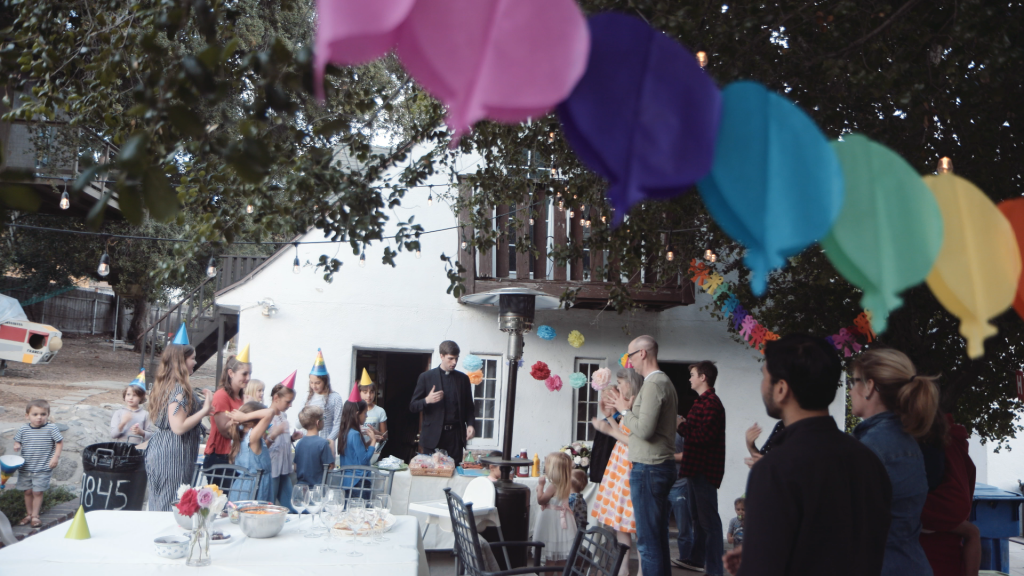
But three birthdays do appear on the liturgical calendar. This is because Catholic teaching tells us that three people have been born without original sin. Jesus and Mary were also CONCEIVED without original sin, Jesus because he was God, and Mary as a gift from God. John the Baptist, however, was conceived as usual, with original sin. But THEN, he was baptized in some way before his birth when he recognized Jesus as God in the womb of Mary at the Visitation. He was sanctified in that leap within his mother’s womb. So he wasn’t conceived without sin, but he was BORN without sin! Read more about it here.
The Nativity of St. John the Baptist was officially established as a feast on the liturgical calendar in the 4th century and by the 6th century the tradition of observing the eve of the feast day with a bonfire was already well-documented. It’s thought that, along with just being a fun way to celebrate, the bonfire signified the way that John’s ministry lit the way for Jesus.’ How cool is it to be able to participate in a Catholic party that’s been going on for well over a thousand years all over the world?! Water fights are also a traditional, but probably more recent, way to celebrate in some parts of the world. So, we do that too.

We are all so busy now, and often don’t live very close to extended family and Catholic friends. It can be a challenge to get far-flug friends and relations together, even when you live in the same town. With work and school and extracurriculars, it’s often all we can do to observe a feast day with Mass or a special meal with the family. But we really make a point of including friends and neighbors (Catholic and not) in our celebrations at least some of the time!
Our faith really is intended to be lived in community. These feasts on the liturgical calendar were historically celebrated by entire parishes, and towns, and countries . . . all together! Especially as our kids have gotten older, we’ve really come to understand how important it is in their own journeys to see our family’s Catholic faith reflected in adults and teens of other families. Looking outside of the family is a part of their natural growth process. We want to make sure there are people in our lives that can give them another example of what a faithful Catholic life looks like.

Some feast days really lend themselves to a party. And this is certainly one. There’s an actual official Roman rite for blessing a bonfire on the Eve of the Feast of the Nativity of St. John the Baptist, which I find amazingly cool. It appears in the Catholic All June booklet here or here, or as a one page printable here. If you don’t have a priest available, the blessing can be performed by the head of the household (just don’t make the outward cross blessing motion, that’s reserved to ordained persons). But, really, invite a priest over! Priests need friends and community too!
Our friend Fr. Matt who came over for our party, was really excited to be asked to participate in such a cool old tradition. He wondered aloud how many priests ordained in the last fifty years have gotten to perform this blessing!
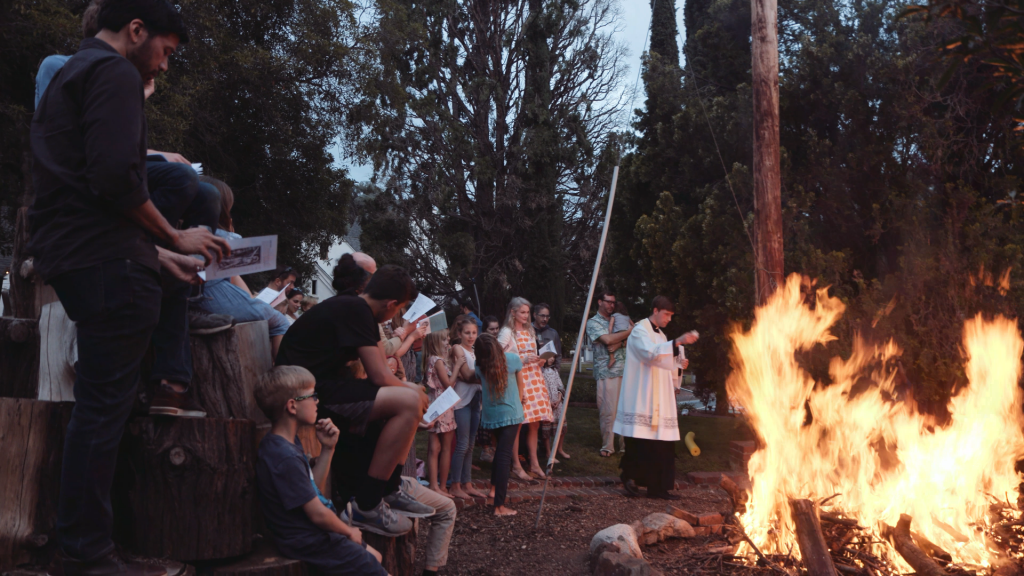
The date of the Nativity of St. John the Baptist was set on the liturgical calendar to fall three months after the feast of the Annunciation, as the Angel Gabriel told Mary on that day that her cousin Elizabeth was six months along in her pregnancy. The Annunciation is observed on March 25th, nine months prior to Christmas, so St. John the Baptist’s feast day ends up on June 24th.
If you’re a liturgical calendar nerd, like I am, you will want to know that the reason it falls on the 24th, instead of the 25th, lies in the Roman way of counting, which proceeded backward from the Kalends (first day) of the succeeding month. Christmas was “the eighth day before the Kalends of January” (Octavo Kalendas Januarii). Consequently, Saint John’s Nativity was put on the “eighth day before the Kalends of July.” However, since June has only thirty days, in our present (Germanic) way of counting, the feast falls on June 24.

The birthday of St. John the Baptist has traditionally been the summer celebration counterpart to the winter celebration of Christmas. It’s beautiful that these feast days highlight way that nature mirrors the theological relationship between Jesus and St. John the Baptist. John said, “He must increase, but I must decrease” (John 3:30). John was born just days after the summer solstice, the longest day of the year. After his birth, each day decreases, becoming shorter and shorter, until . . . you guessed it, December. Jesus was born December 25th, after which each day increases, becoming longer and longer.
Pretty cool, no?
Okay, say I’ve convinced you? You want to throw a party for the Eve of the Nativity of St. John the Baptist. In case it’s helpful, here are links to just about everything I used to throw our little shindig.
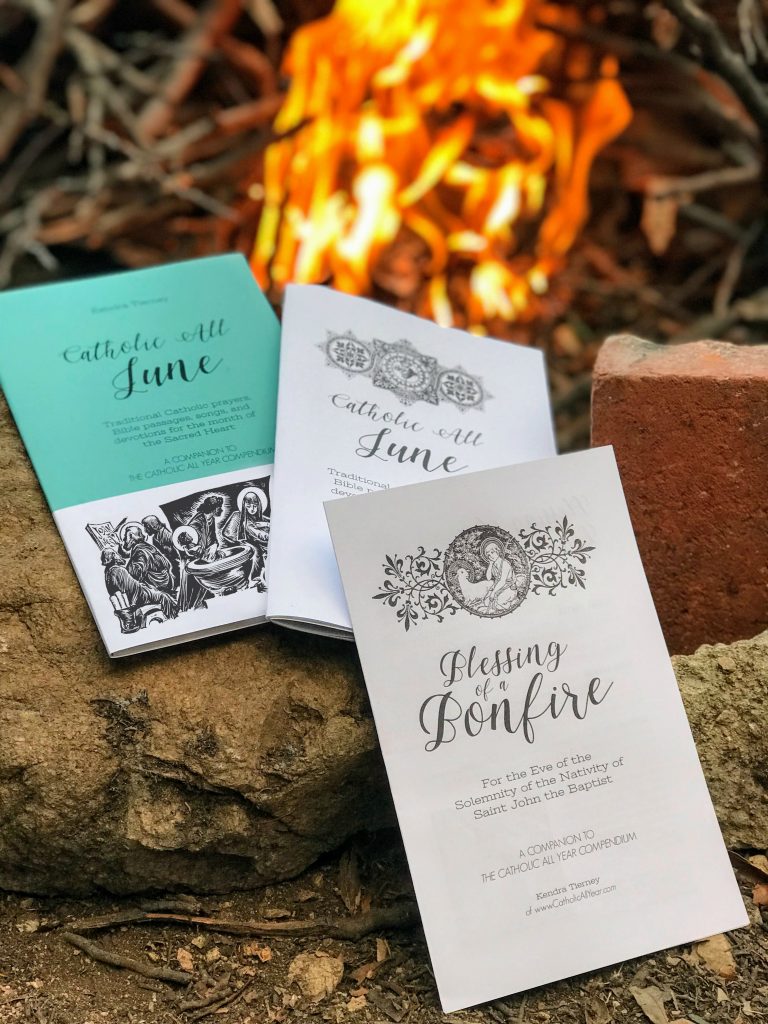
To eat:
- Locusts (dried, flavored crickets! This is three small boxes of three different flavors, there are maybe ten crickets in each package?)
- Wild honey (honey sticks work great for this)
- We also had hot dogs, chips, salad, and s’mores
- But grasshopper pie would also be a fun dessert
To decorate:
- Birthday bunting and paper decorations
- Adult party hats
- Kid party hats
- Party blowers
- Birthday plates/napkins
- These bamboo dessert plates seemed St. John the Baptist-ish somehow 😁
To do:
- Self-sealing water balloons
- Backyard fire pit, in case you need it. We just built one out of rocks in a dirt spot in the yard.
To read:
- The Catholic All Year Compendium
- Catholic All June
- Blessing of a Bonfire
- Building the Benedict Option
The Solemnity of the Nativity of John the Baptist is featured in the Catholic All Year Membership for June! That means members can grab some liturgically delicious recipes for Grasshopper Ice Cream Pie, Crispy Cricket Tacos, as well as a printable activity!
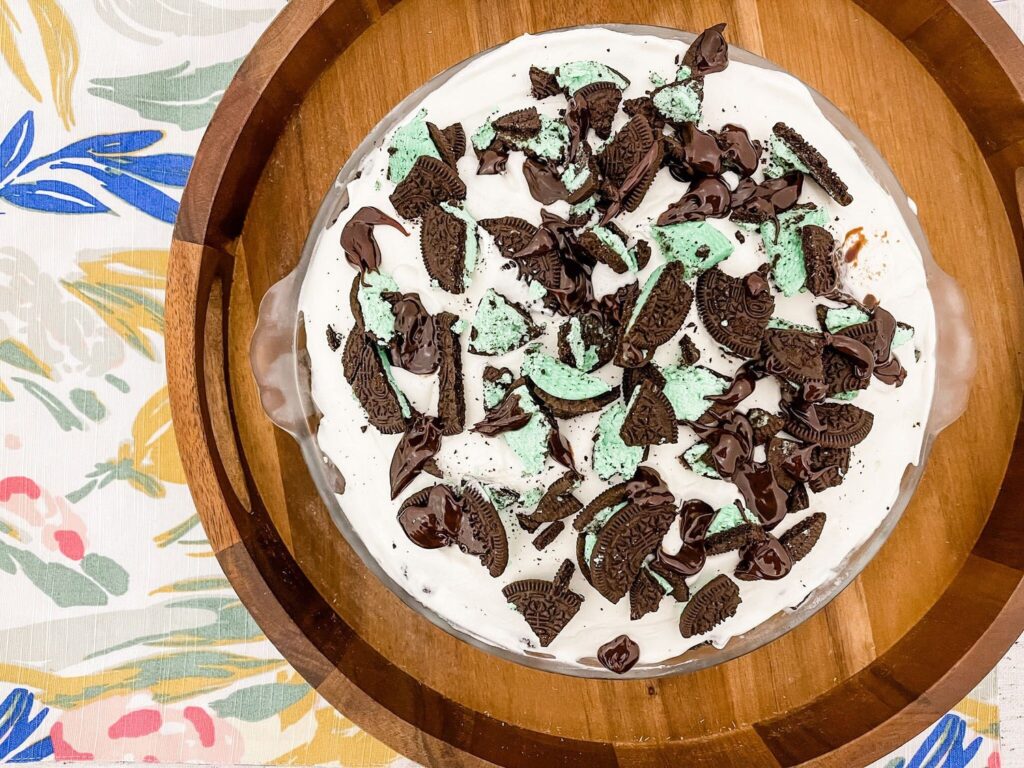
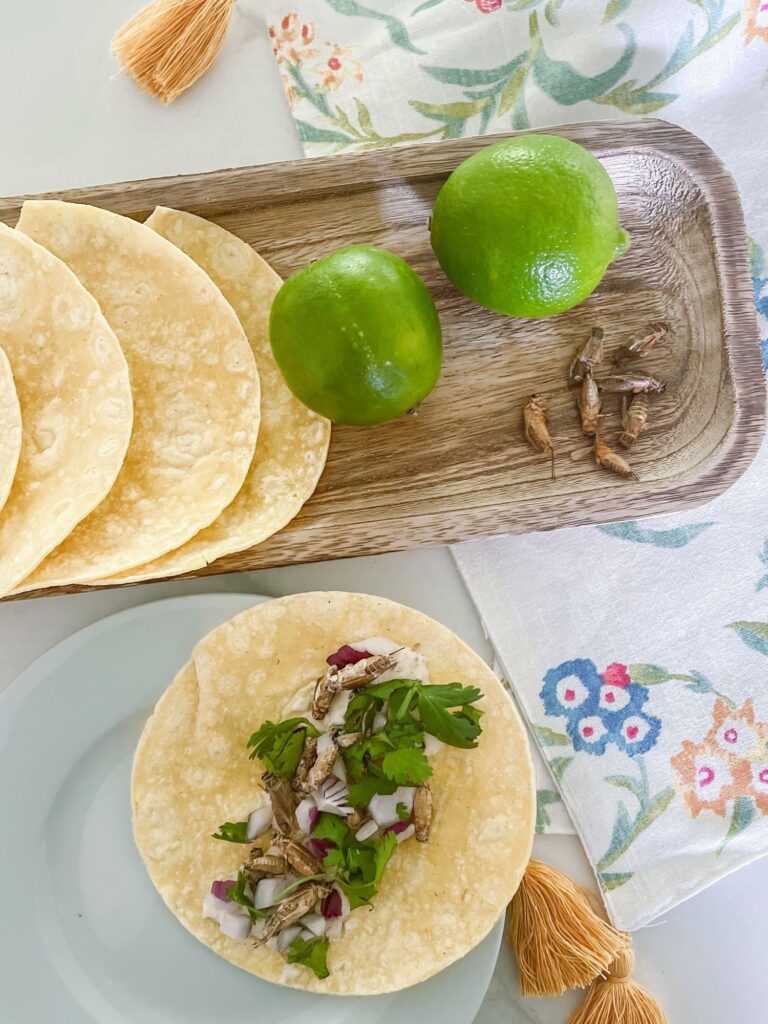
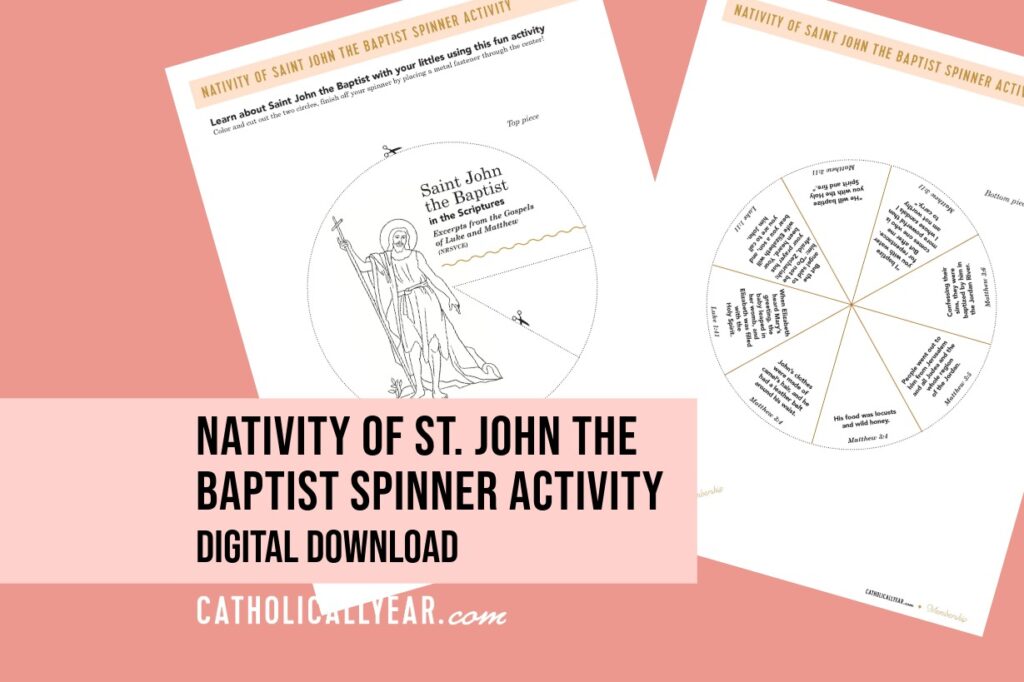
If you aren’t a member you can still join in on the fun by printing your activity pages here! Learn more about the membership to see how you can get free shipping, exclusive discounts, and access to the entire CAY Membership Library!


Okay, here’s a really important question arising from our family-wide study of Kendra Tierney’s collected works. It’s courtesy of my 14-year-old Magdalena.
In the compendium, you joked that you served insects on Easter (along with ham and shellfish) as representative of forbidden foods that we are now allowed to eat under the new dispensation. But how did John the Baptist have any ‘cred’ with the Jews if he lived on insects that were forbidden under the Law?
Apparently there are some species of kosher locusts. Who knew? https://en.wikipedia.org/wiki/Kosher_locust
I could not love this more. The question is amazing. I was stumped. And someone found the answer. The. Best.
This one is new to me and I LOVE it! Looks like we are going to be throwing a Bonfire, Blessings, and Birthday party just in time for Victor’s 49th.
Locusts anyone? LOL
It’s actually believed that the “locusts’ the Bible refers to are the pods of the carob tree, also known as a locust bean tree. The carob tree grows wild in the Mediterranean, and was also the source of the “pods” that the prodigal son hungered after when he fed them to the pigs. The pods resemble locusts, but it makes more sense that he would have eaten these, rather than bugs that migrate and are not around all year in the desert!
http://antipas.net/14faq.htm
https://en.wikipedia.org/wiki/Ceratonia_siliqua#Etymology_and_history
Although it’s true that he probably did also consume insects, as one would when surviving in the the wilderness (my husband did this during his survivalist training), you could offer carob as well as the crickets!
My family had already been planning a party for this feast day, and after reading this, we are even more excited to do it. We are planning to set off some fireworks, which is a big tradition for the feast day eve in Florence, Italy. Thanks for the post, it was enlightening!
You’re welcome! I’m glad to hear it!
Hi there! Just curious – do you have a bonfire on Pentecost AND the eve of the feast of the nativity of St. John the Baptist?
We do, but we have a fire pit in the backyard and a big pile of wood, so it’s not a big deal. Jack is also throwing one next week for the whole high school to come burn up the year’s schoolwork.
This was actually our first big St. John the Baptist bonfire, and we definitely want to do it again. Our Pentecost bonfire is usually a smaller, family affair, either in our yard or down at the beach.
Any tips on how to invite a priest? Are most priests familiar with this rite?
Most definitely do not, but that’s why I made this little printable with everything they need! https://catholicallyear.com/product/blessing-of-a-bonfire-booklet-of-prayers-blessings-bible-readings-digital-download/ It’s also in the June booklet. https://catholicallyear.com/product/catholic-all-june-printable-booklet-of-prayers-blessings-bible-readings-digital-download/ Priests are just like regular people, of course, in that some like parties and some are more homebodies, but we have had great success in inviting them over for dinner and events. Sometimes they’ll ask you to contact the parish secretary, to make sure they don’t have a conflict. But it’s worth the effort!
I know I’m a little late to this post, but would you consider writing a post on how you go about incorporating prayer into your parties? I love the idea of it, but it is so intimidating knowing where to start! We throw some small gatherings for feasts, but beyond praying before eating, we’re just not sure what to do and how to do it without weirding people out (maybe?). Like, do you only do feast-specific prayers, or do you ever close with a rosary? Do you tell people ahead of time prayer will be involved, or do you just spring it on them? We’re relatively new to our area and have friends, but we don’t all know each other well enough yet to wonder how weird we’ll sound… Plus, with everyone wrangling babies/toddlers (and no older children to help out) it seems destined to be a train wreck! But, we want our children to not just grow up with friends who are also Catholic, but all of us living out our Catholicism together! We’re just stuck on logistics.
We usually try to keep it low-key, like at our Michaelmas party we say grace AND the St. Michael prayer before we eat, other than that, it’s just a regular party except that the pinata is the devil. OR, we include it in the invitation, so people know what to expect, like when we do our fish fry / stations of the cross on Good Friday, or our Nativity Play on Christmas evening, or the bonfire blessing.